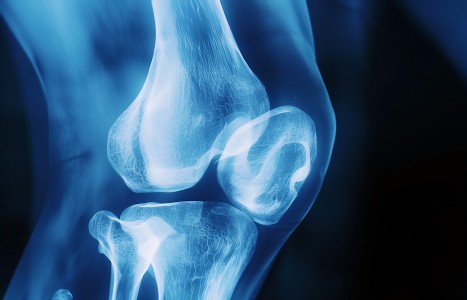While there may be no “magic bullet” when it comes to health, this should not dissuade patients or practitioners from seeking out ingredients that offer multiple health benefits. When it comes to dietary supplements, there are thousands upon thousands of choices. So, why not choose one that can address pain and assist with mental health? A supplement that can address inflammation, while also preventing certain types of cancer.
| Digital ExclusiveApplying the Thin Skull Principle
The "thin skull" principle, also known as the "you take your victim as you find them" principle, is a legal principle that can be summed up by the following statement: If a person is negligent and that negligence causes injury to another person, the defense cannot make the claim that the victim was prone to injury or that the victim's injury would have been less severe if the victim were tougher.
For example, if a person has a "thin skull" due to a pre-existing condition and is struck in the head by another party, an injury may occur that normally would not have occurred; or an injury may result that is more severe than it would have been if the party struck had a "normal" skull. In this situation, the defense for the party that struck the blow cannot claim the injured party should have had a thicker skull.
Obviously, this principle is important in liability cases. The defense always attempts to make an issue of any pre-existing conditions. Some think the principle removes the pre-existing argument; however, it only removes any "blame" from the patient for the pre-existing condition. It does not keep the defense from claiming a new injury did not occur and the patient's pre-existing condition is the reason for the patient's symptoms; or that the patient's pre-existing condition is at least partially responsible for the symptoms in question.
With this information in mind, there is another principle that must be employed to protect the newly injured patient with a pre-existing condition. The principle does not have a particular name; it is simply a principle of proper diagnosing.
Many doctors of chiropractic use a one-step method for describing a patient's state of health, assigning named conditions with ICD-9-CM numbers (soon to be ICD-10-CM numbers). The named conditions and their corresponding numbers are placed in patient files, and appear on standard billing and claim forms.
Everyone is familiar with this method. However, an additional step can be added to the method that will increase the accuracy of the diagnosis. The step involves dividing the named conditions into three categories:
- Impressions
- Treating diagnosis
- Complicating factors
Impressions
Impressions include everything noted about the patient during the examination process. Most imaging reports contain a good example of impressions. The radiologist's findings listed throughout the report are summarized under impressions at the end of the report. The significance of each finding in the impressions list is described and/or clinical correlation is recommended.
This process also should be used for findings identified during the history and examination process. A list of impressions should be established. Once established, the list can be added to and correlated with the impressions list from any imaging performed.
Impressions are not always true diagnoses. Some entities that have been assigned ICD codes are not usually of clinical significance (spina bifida occulta) or just observations (the new ICD-10 system has a code for "unusual personal appearance").
Treating Diagnosis and Complicating Factors
Table 1: Female Auto-Accident Victim
|
Table 2 depicts the division of the impressions list into the treating diagnosis and complicating factors categories. Review of the three categories in Table 2 and their content shows the impressions to be everything found during the examination process; the treating diagnosis to be those conditions resulting from the accident; and complicating factors to be conditions already present at the time of the accident.
Table 2: Impressions, Treating Diagnoses & Complicating Factors
|
The contents of Table 2 should be listed in the patient's file. The only items from the table that should be placed on the billing and claim forms are the two conditions listed as treating diagnoses; i.e., the cervical and thoracic sprain / strains.
The remaining conditions listed under complicating factors are truly complicating factors. Degenerative disc disease results in a less-than-optimal spine (the thin skull) that cannot withstand trauma as well as a healthy spine. Diabetes is a systemic condition that can have a significant negative impact on healing. Both conditions can delay healing.
The conditions on the billings and claims are those conditions for which the insurer is responsible. Auto coverage is for injuries related to auto accidents. It is not responsible for the degenerative spine or diabetes.
Should the doctor list all four conditions on the billings and claims, the carrier will immediately (and correctly) say the degenerative disc disease and the diabetes were not caused by the auto accident and they are not responsible for the patient's care. It is deemed pre-existing because the treating doctor has listed their treatment as being, even if only in part, for pre-existing conditions. The doctor accomplishes the following by listing the findings from the diagnostic process in the three categories from Table 2.
- Acknowledged all clinical findings (diagnoses)
- Defined the injuries related to the auto accident and established them as new
- Established that treatment is for the accident-related conditions
- Acknowledged the patient's pre-existing conditions (thin skull)
- Established the fact that the pre-existing conditions will likely affect healing in a negative way, delaying healing (you take your victim as you find them)
- Set the stage to explain why the patient may require more treatment than a person who does not have pre-existing conditions
- Made the diagnosis more accurate and specific
- Defined the patient case so all parties have a clear understanding of the patient's health status
There are two arguments against the steps recommended here. The first argument is the opinion that the doctor should treat the patient as a whole; that the pre-existing conditions must be addressed with the accident-related injuries. This is good patient care and sound philosophy.
The second argument is that if the diagnoses are split, the patient might require treatment for the conditions under two separate carriers, making record-keeping and billing difficult. This can be done, but it is never easy.
To address the first argument, keep in mind that an insurance policy is not philosophically based. It is a legal agreement between two parties. It assigns specific rights and responsibilities to each of the parties in the agreement. The doctor and philosophy are not party to the agreements.
If a doctor follows a treatment protocol based on the philosophy of treating the patient as a whole, it usually complicates payment and legal issues, even though it produces better results for the patient. In my opinion, our whole-person treatment philosophy is a common reason for complications in both personal-injury and worker's compensation cases. Carriers and employers only want to reimburse providers for care they are responsible for contractually. They do not have philosophies and have not pledged or signed a healing oath. Our whole-patient treatment philosophy confuses carriers and employers, leaving them suspicious of our profession.
To address the second argument, it is acknowledged that treating a patient for separate conditions simultaneously that are covered under separate carriers is a pain. It is confusing and appears to be double billing to many. In our example, the sprain / strains and the degenerative disc disease will be affected by treatment simultaneously. The only demarcation between the new and pre-existing conditions will be the length of the course of treatment. It will be longer than it would be for either condition individually.
This leaves the patient's diabetes to be addressed. If the patient is a known diabetic, it is likely she is already under care for the condition. The doctor only needs to make sure the patient is controlling the condition and receiving routine care. The diabetes can be addressed from a chiropractic standpoint after the spinal injuries have resolved. Diabetes will remain long after most spinal injuries.
The last recommendation really addresses both of the arguments against splitting the diagnoses in a case. Simply address the auto-related injuries, release the patient and then begin anew with care for the pre-existing conditions.
I practiced for 17 years in a state where worker's compensation laws forbid the treatment of an injured worker for anything other than the work-related injury. The situation discussed here occurred countless times. Each time, the diagnoses were split into the recommended categories and personal / pre-existing conditions were addressed once the work-related injuries resolved.
It must be stated that in many cases, everything on the impressions list is identified as being a result of the accident in question and no pre-existing conditions exist. When this occurs, everything on the impressions list becomes a treating diagnosis. A complicating factors list is not necessary.
The Value of Preparation
Bringing this discussion back to the "thin skull principle" and pre-existing conditions on litigation cases, when a diagnoses list is presented to a patient's attorney with a description of what the categories indicate, it helps the attorney prepare the case. It immediately raises the possibility of arguments from the opposing side about pre-existing conditions to the forefront so they may be addressed head-on. It helps the attorney organize the case materials and their own arguments. Patients and their attorneys must "take us as they find us," too. Be prepared.


